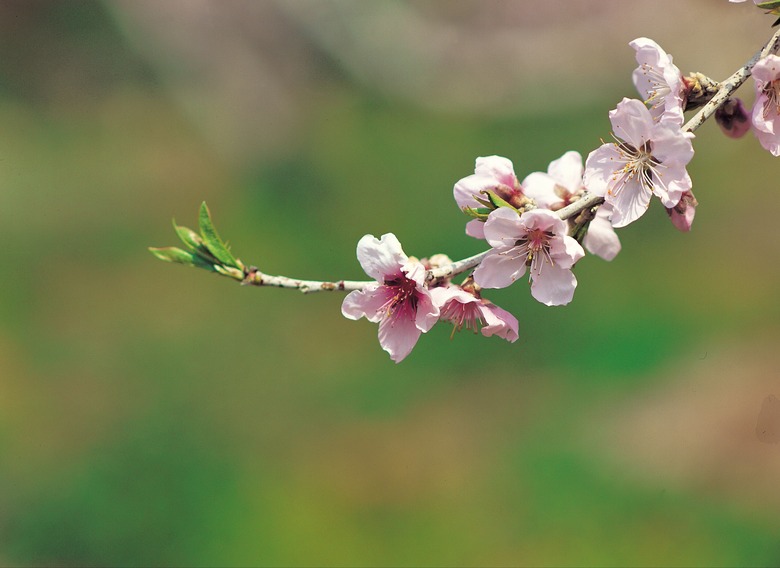List Of Self-Pollinating Cherry Trees
There's a lot to consider when choosing a fruit tree, such as light requirements, soil type and irrigation. However, one important factor easily overlooked is to ensure that your fruit tree is pollinated — otherwise there will be lots of flowers and no fruit. Many plants require a partner to provide pollen, while others are self-fertile and can set fruit on their own. Most cherries (Prunus spp.) require cross-pollination, but self-pollinating varieties have been developed for those that just have space for a single tree. These luscious fruits are cold hardy in U.S. Department of Agriculture plant hardiness zones 4 through 9, depending on variety.
Self-Pollinating Early Sweet Cherries (Prunus Avium)
Step 1
"Royal Tioga" is the earliest ripening sweet cherry, typically harvested in the month of May. This firm, red-skinned variety has rose-colored flesh and the fruit is unusually large compared to other cherries. It is a "low-chill" variety, requiring only 500 hours of winter chill, and is hardy in USDA zones 5 through 9. "Craig's Crimson" is a naturally small tree growing about two-thirds the size of other cherries and bears dark red, nearly black fruit. It needs about 600 hours of "winter chill" and is hardy in USDA zones 5 to 9.
- There's a lot to consider when choosing a fruit tree, such as light requirements, soil type and irrigation.
- Royal Tioga" is the earliest ripening sweet cherry, typically harvested in the month of May.
- This firm, red-skinned variety has rose-colored flesh and the fruit is unusually large compared to other cherries.
Self-Pollinating Mid-Season Sweet Cherries (Prunus Avium)
Step 1
"Sunburst" ripens in the middle of the peak cherry season and has large, dark red fruit. Its fruit resists cracking in rainy weather, which is one of the most common problems with cherry production. "Sunburst" requires 800 hours of winter chill and is hardy in USDA zones 5 to 9. "Sweetheart" has bright red fruit and comes into production at a young age. The trees are vigorous and will grow to a large size unless pruned annually. This variety requires 700 chill hours and is hardy in USDA zones 5 to 9.
Self-Pollinating Late Ripening Sweet Cherries (Prunus Avium)
Step 1
"Lapins" is one of the most popular self-fertile cherries because of it reliable production and excellent flavor. The large, dark red fruit ripens late in the season and requires only 400 hours of winter chill. "Lapins" is cold hardy in USDA zones 5 to 9. "Stella" is another late-ripening cherry with dark red fruit of excellent eating quality. Just like "Lapins," "Stella" is a good choice for mild winter climates because it needs only 400 hours of winter chill to set fruit. "Stella" is cold hardy in USDA zone 5 to 9.
- "Sunburst" ripens in the middle of the peak cherry season and has large, dark red fruit.
- Sunburst" requires 800 hours of winter chill and is hardy in USDA zones 5 to 9. "
Self-Pollinating Sour Cherries (Prunus Cerasus)
Step 1
"English Morello" is a sour cherry that is suitable for pies, preserves, cherry juice and eating fresh. The fruit is dark red to black and needs only 500 hours of winter chill. "English Morello" ripens late in the season and is hardy in USDA zones 4 to 9. "Montmorency" sour cherries have light red skin with yellow flesh and are used primarily for baking. The trees are very cold hardy, growing in USDA zone 4 through 9, and require about 500 hours of winter chill.
